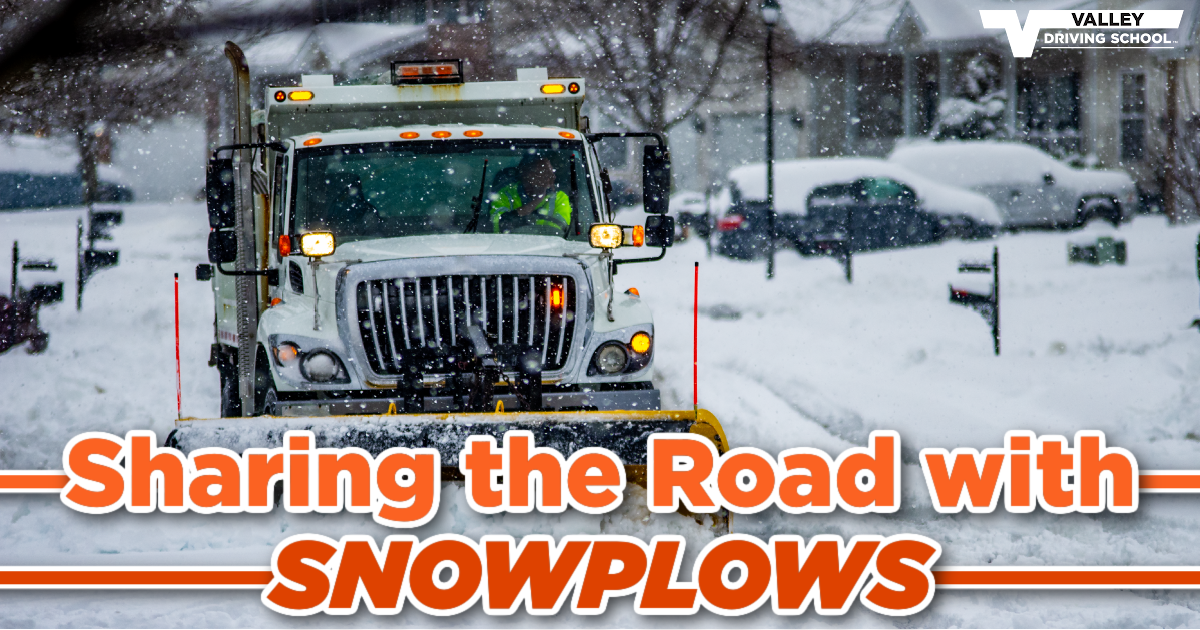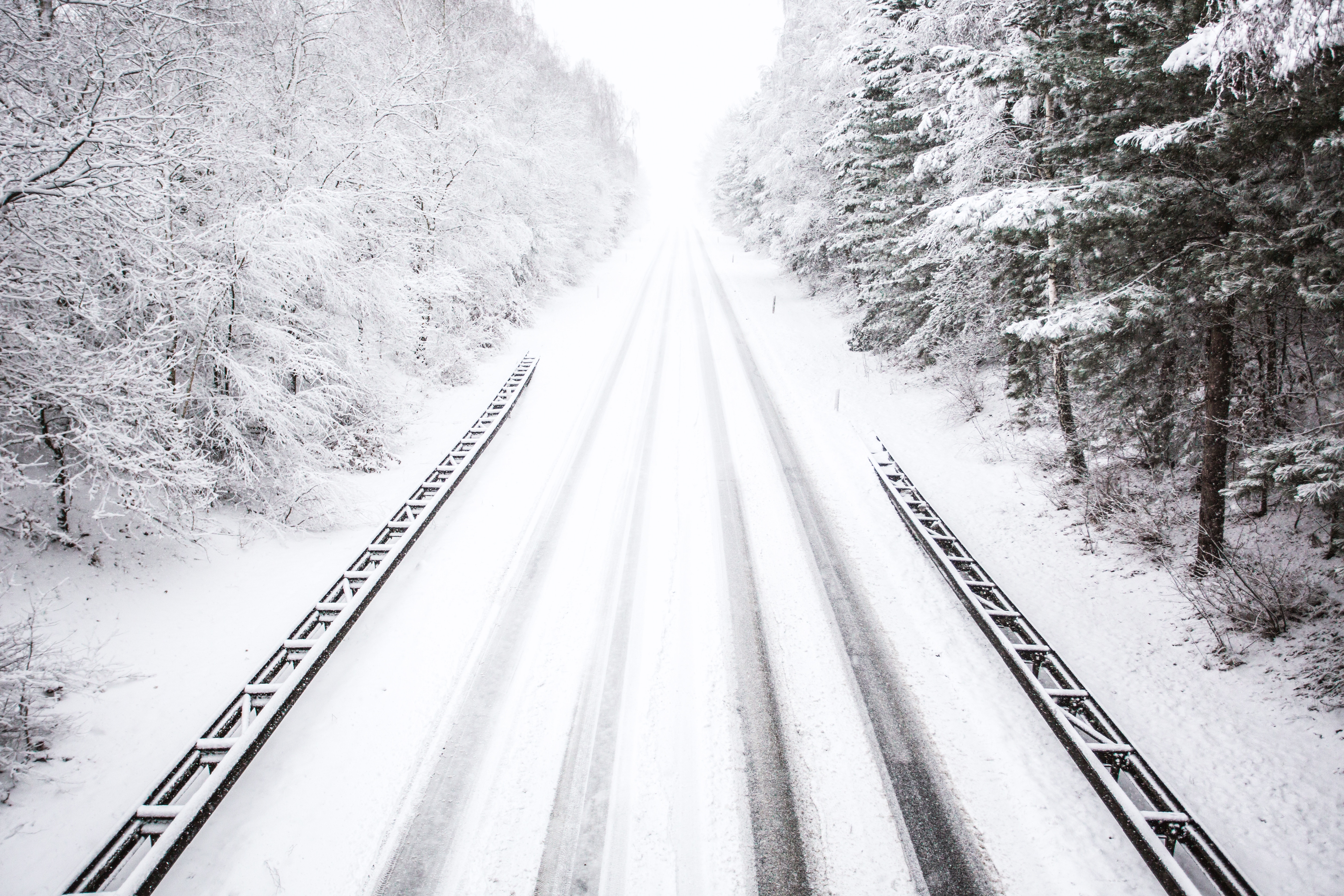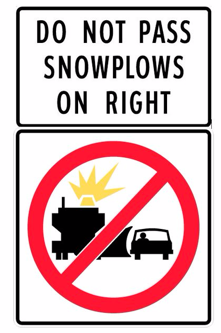They’re big, they’re loud, and they’re a powerful force on the roads in winter. Snow plows are a saving grace of Canadian roadways for a good chunk of the year in the Great White North. Without them, we’d be trapped by Mother Nature’s snow and ice, and reduced to walking to work or shoveling the streets ourselves.

Sometimes, staying off the roads is your best bet, but there are situations where you have to brave the elements, so in this post, we’re discussing how to share the road with snow plows.
Keep Your Distance

When plows sit idle at a stop light, or when they’re plowing on the road, they’re not only clearing snow at the front; they’re also spreading sand and/or salt from the rear. A small mechanism spins and evenly distributes the material across the roadway to help reduce ice buildup and overall slippery conditions. Keeping your distance ensures your vehicle will not sustain any more winter damage than it has to.
In high risk areas, like hills, tight turns and bends, ramps, bridges and intersections, always give a plow as much room as you can safely manage. Snow plows require ample room to turn and maneuver safely, and having a 1000-pound plow sticking out of their front end is no help. Giving the plow and the operator the benefit of the doubt, and keeping out of the way so they can do their job, will keep everyone safe.
Staying clear of a snow plow ensures you’re able to respond in good time should the plow need to stop abruptly or swerve to avoid an obstacle on the road. Motorists should give snow plows at least 10 car-lengths of space to avoid any potential mishap with the back of the plow.
Snow plows also have limited fields of vision. Much like a transport truck, plows may not always be able to see you depending on where you stop. Giving them as much room as possible helps to ensure they can get to where they need to go safely and with ease.
Do Not Pass
 The nature of plowing dictates a slower pace. Plows drive slower so they can safely clear snow and distribute their sand/salt to help provide passengers vehicles with better traction. They’re equipped with lights, warnings and signs to let drivers know they operate at a slow pace.
The nature of plowing dictates a slower pace. Plows drive slower so they can safely clear snow and distribute their sand/salt to help provide passengers vehicles with better traction. They’re equipped with lights, warnings and signs to let drivers know they operate at a slow pace.
Do not pass a plow in a winter driving situation, as it is unsafe. Snow plows can have wing blades on their left or right sides which may be throwing the snow it is plowing and these blades are not always visible because of those “snow clouds” being made. These vehicles also travel in a series of two or more plows, using a method called Echelon Plowing, which staggers plows diagonally across the roadway to clear multiple lanes simultaneously. Passing one plow to find more on either side of your vehicle could create a dangerous situation, with limited visibility for both you and the snow plow operator. Plows can create large, blinding clouds of snow that can completely eliminate your ability to see what lies ahead. When you see a snow plow approaching from the opposite direction, on an undivided highway, pull over to the right if safe to do so.
While clearing the roadways of snow, operators are working as quickly and as safely as they can to get the road clear for drivers. Plow operators will pull over when they are able to do so to let motorists pass – this is your opportunity to move past them.
Reduce your Speed
In town, always reduce your speed when passing or following behind a plow so they can accommodate turns, obstacles in the road, and other drivers in your vicinity. Should your vision be temporarily impacted due to a plow’s cloud of snow dust, reducing your speed ahead of time will help you to adjust to the situation at hand and navigate through a tough spot with relative ease.
-----
Snow plows clear and ensure the roads are safe for drivers during the wintery months when the weather gets cold. They also salt or sand the roads to minimize slippery ice sections and to keep vital traffic arteries open for emergency vehicles, so knowing how to share the road with them is paramount to safe driving.
